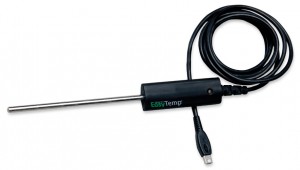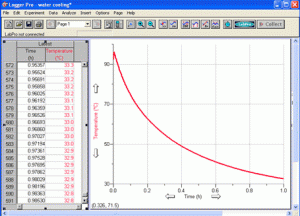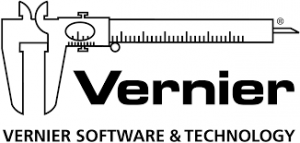Keep It Warm or Cool It Down
Making connections between content areas is an important to our understanding of the concepts. This lesson would be ideal in an 8th grade algebra class where students also taking physical science, or in a high school algebra or functions class if students are taking physics. If students are not taking a physical science class and/or have not gotten to the topic of conductors this lesson can still be done with a limited understanding of the physics content. This project would take place during the a segment on exponential functions.
Standards for this project:
CCSS.MATH.CONTENT.HSF.IF.C.7
Graph functions expressed symbolically and show key features of the graph, by hand in simple cases and using technology for more complicated cases.*
CCSS.MATH.CONTENT.HSF.BF.A.1.B
Combine standard function types using arithmetic operations. For example, build a function that models the temperature of a cooling body by adding a constant function to a decaying exponential, and relate these functions to the model.
CCSS.MATH.CONTENT.HSF.LE.B.5
Interpret the parameters in a linear or exponential function in terms of a context.
CCSS.MATH.PRACTICE.MP4 Model with mathematics.
CCSS.MATH.PRACTICE.MP2 Reason abstractly and quantitatively.
General Equipment:
- Vernier Temperature probes
- Computers with Logger Pro
OR
- Vernier Go Wireless Temperature Probes
- Go Wireless Temp App for Ipad or other tablet
- Aluminum soda can for each group
- Boiling or VERY warm water
Specific Equipment:
- Student chosen method of insulation/cooling for their can.
The Project
Students will be placed into an even number of small groups or pairs, half of the groups will be tasked with cooling the hot water in their cans to room temperature as quickly as possible and the other half will be tasked with keeping their water from cooling to room temperature as long as possible by only altering the environment outside of the can. Students will use their knowledge/minimal research to come up with plans in their groups and have the next day or two to prepare outside of class with their group gathering supplies, or building their cooling or insulating apparatuses.
Once the cans are prepared the instructor will pour very hot water into the cans, and students will put in the temperature probes. Have every group start recording their data and when the temperature cools to 90°C so all starting temperatures are the same. While students are doing this, allow a control, just a plain can to be going at the same time. Students will have a graph of their temperatures, and will need to find an equation to model their equation.
Students can write their equations on the board and use reason and their knowledge of exponential functions to determine the order that the groups cans cooled to room temperature. The functions can then be graphed together to model and compare the rate of cooling for each groups’ can.


